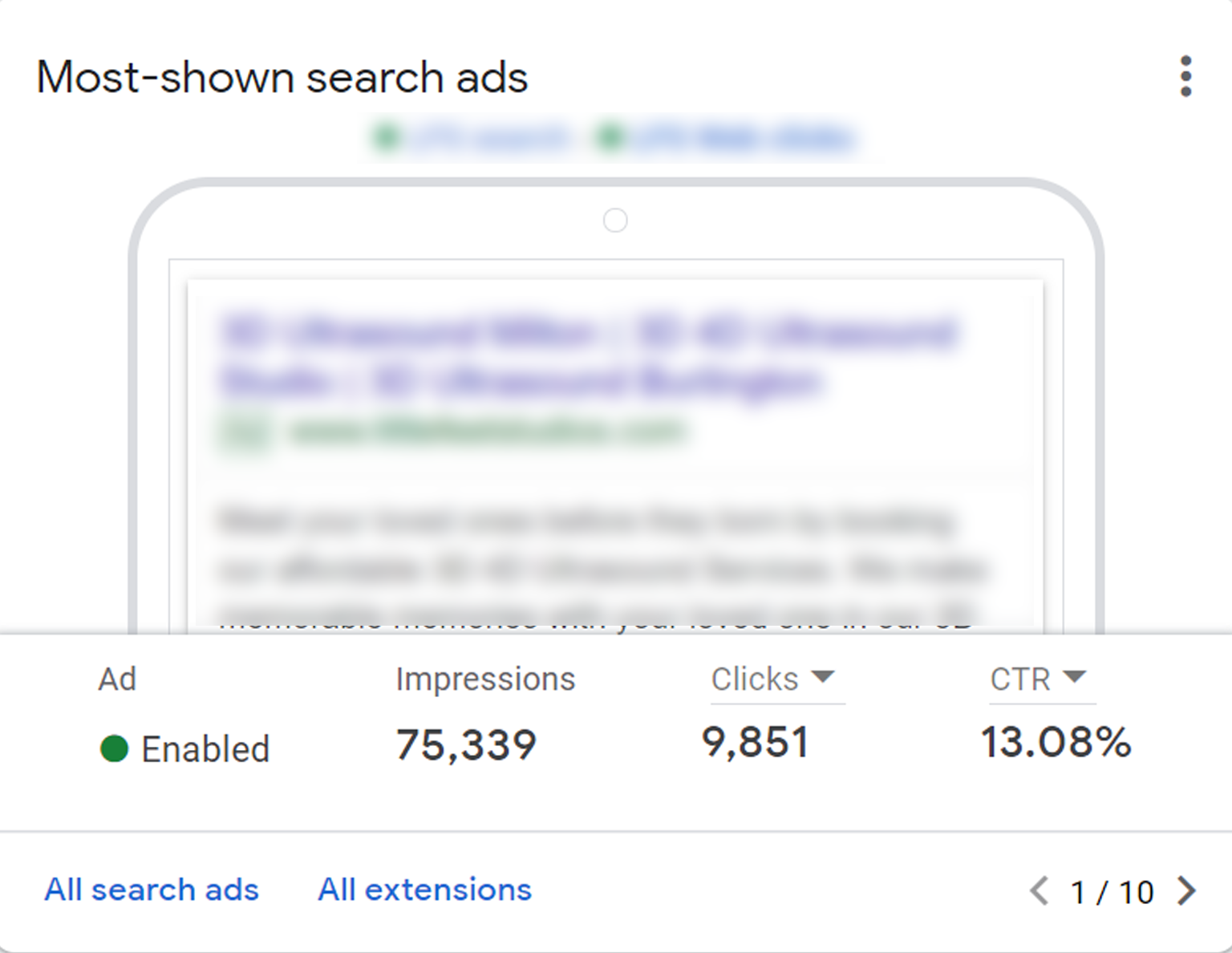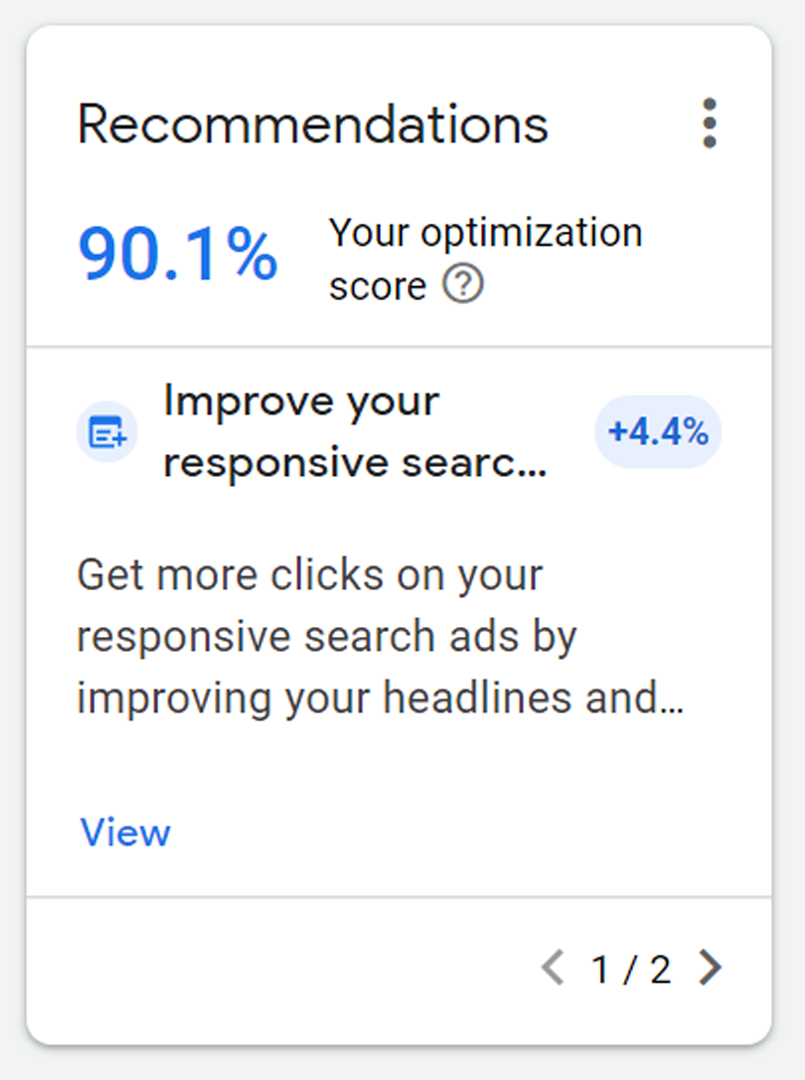7 Proven Ways to Improve and Increase Google Ads Click-Through-Rate “CTR” above 10% in 2024…
psst!!! 7th is a Traffic Hack…
Regular optimization of actively running Google Ads is more important than ever. It’s important because many factors are dependent on actively running ads such as;
• click-through-rate
• bounce rate of the website
• cost per click, etc.
We refer to it as “the SEO of Google Ads”.
Today we’re gonna share 7 proven ways to increase Google Ads click through rate, starting with number 1;

“we do aggressive pay per click and boost click through rate” – courtesy of Shardia
1. Must include Long-tail keywords
By including long-tail keywords in your campaign which is a great trick to drive relevant traffic to the website and an essential factor to increase Google Ads click-through-rate. Especially when people are actually searching for something they really want, your ads have over 70% of chance to come up in search results.
How?
Back in 2016, we ran a campaign for one of our client’s and found out that generic keywords were more likely to increase the bounce rate since the searcher is not looking for something specific. The behavior statistic showed, the user visited the ad, spent a few seconds and bounced off quickly. It happens quite a few times and we assumed that we might have reached the right audience but the information wasn’t that of importance.
The keyword does match the search query of the user but that user wasn’t there to give us a conversion, aka. money business; but in fact might be looking for some general information or a little sneak-peak which might have been present on the website.
What have we determined?
E.g. If someone searches for ‘3D ultrasound’, you’ll get tons of results including photos, videos, articles and other available media. But what we want is to bring the ads to those users who can actually convert into a paying client.
Soon enough we learned something useful by adding long-tail keywords and we re-optimized the search keyword list in Google ads campaign and now we included city names as ‘3D Ultrasound Burlington’.
That play resulted in getting massive traffic on our client’s website and we were able to convert 93% of 15.4K visitors clicks into paying clients.

one of our client’s Google Ads view from March 2020 – December 2021
2. Keywords sculpting
Another technique to maximize search traffic to your website is to sculpt the data gathered with paid campaigns. Chances are, if you just opened a new account with Google Ads you won’t get any search ads visitors data, hence spending just a little couple of dollars will provide you enough data to work with.
What particular data are we looking for?
We started a service called AI voiceovers just back in November 2021 and didn’t have so much data as to how we should market our service. Therefore we decided to spend $50 for a limited time in order to gather search data as to how and what people are searching for and with which keywords. It’s another great technique to gather useful information which gives an insight into how other users over the internet are searching for a particular service or a product.
We found out, people searched for the keyword ‘voiceover’ 315 times over the week but that keyword never gave us any business, although it does drive traffic to your website and we did receive some impressions, but it increases our overall bounce rate which is an algorithmic deranking factor.
Therefore we decided to remove that keyword from the search keyword and include it in the negative keywords list of the campaign. By doing that, we limit the visitors to only those who are actually looking for the services and it helped us big time, as it lowered our bounce rate and maintained a successful CTR above 10% throughout the campaign.
We highly recommend hiring a professional expert or hire us, while doing this. If not done correctly, you might lose substantial traffic.
3. Use [Exact Match] type keywords
Unlike broad match keywords, exact match keywords are restricted as to the visitor’s search query and it can be tied to certain geolocation only, if your ads are allowed to show up.
Exact match keywords can be very useful especially if you are servicing in a particular location or multiple locations and if your business has a very specific niche.
To learn more about match types, read this!
Exact matches can drive high traffic and click through rate can be doubled up in a matter of hours if done correctly. For example, if a user searches for a ‘furniture store’ in an urban district area you probably get these known names.
However, if a user made a search for ‘furniture store’ in a more rural area chances are the big furniture stores ads might show up because of popularity over the internet but it won’t be relevant to the user. Therefore exact match types are useful when it comes to pinpoint a product or service and luckily Google can tie keywords to a specific region even if the keyword is generic. – read more in the 7th trick*
This was another scenario taken as an example of one of our clients where we helped a furniture store to compete against their big known competitors.
We designed an aggressive campaign for them where we heavily focused on exact match types and it seriously drove an insane amount of traffic to their website and their local showroom even to this date.
4. Maintain a Negative Keyword List
Our main focus is to drive traffic and boost CTR, however, we should also consider lowering the bounce rate of the websites; besides, nobody will like to overpay for non-relevant traffic. Since, our goal is to define our objectives, bring relevant traffic to the website, and provide value to users. Hence, keeping out generic traffic must be an ideal approach here.
Let’s get one thing straight, no matter what we do we can’t create all visitors into paying clients. Though it is ideal to provide a sales channel only to those who are willing to give you business for a potential conversion, in our opinion.
In our years of corporate experience, we determined a user who is really looking for something will use long-tail keywords in their search query as opposed to a get-quick-info user with a generic keyword.
Therefore, maintaining a negative keyword list is a crucial part of keyword sculpting that will help filter out the generic traffic and your ads won’t show up in generic search results.
As our previous example for ‘3D ultrasound’, since ultrasound can be of so many types usually shares it’s root with medical science and falls under the category of sonography. Therefore, differentiating 3D ultrasound with the medical ultrasound using Google ads can only be done via negative keywords list.
Such keywords list is responsible for excluding unwanted keywords that might trigger your ads in search results. In our experience with our client, we made a huge list of negative keywords and all that data gathered over the months, we were able to achieve relevant traffic, more paying clients, higher CTR and dropped bounce rate.
5. Must use Ad Extensions
Adding one or more extensions can increase overall ad score. It will make your ad professional and more catchy to visitors. Our goal here is to be precise and relevant to the user. There are many extensions available while preparing an ad but the few we recommend are
• call extensions
• callout text
• sitelink extensions
Using these three basic ad extensions will ultimately increase the ad score. For more in-depth information on the ad extensions, read this.
6. Maintaining Optimization Score
Whenever we get a client who has previously been doing Google Ads and upon a brief audit, we always find unnecessary keyword stuffing here and there which ultimately lower the overall ad score.
In Google’s ecosystem everything has to be properly optimized in order to put something to use. Google Ads however, uses a campaign optimization score which tells the overall performance of the campaign, it will also show the green, yellow and red check mark based on your campaign performance. To read more about it here.

We recommend having the score at 80% or above along with the green checkmark, that exclusively tells you that Google understands your campaign’s bidding strategy and everything is up to the mark.
Check out one of our’s client’s account optimization score
1. Be aware, not everything Google says is actually needed for your campaign unless necessary. For example, it might recommend placing your ad on it’s partners sites, which we don’t recommend at all.
2. Another thing, if your bidding strategy is set to ‘maximize conversions’, it will also tell you to set up conversion tracking that will link your website with Google Analytics and then with Google Ads.
3. Please use a professional for such tasks or let us know and we’ll help you out.
7. Include “near me” in your keywords
*continuing and merging 3rd trick with 7th
It sounds silly but it works 110% every time.
Google search criteria has evolved over the years and the latest search criteria that is active now for more than 5 years, is location based searching.
How does Google search work nowadays?
It’s easy, many users search the internet with their mobile devices. Mobile devices of today are equipped with tons of micro-tech sensors including accelerometer and magnetometer that conveniently work with satellite based Global Positioning System (GPS), in addition to your mobile IP geofenced network.
In short, these technologies are being used in search queries in order to bring relevant information whenever a user Google’s anything. Since, location on the device is usually known by the browsers, therefore searching for ‘shawarma place’ or ‘car rental’ will actually provide you relevant information based on your geolocation; even though a user can type ‘near me’ alongside your search query the result may stay the same.
But if you are setting up your ads, we recommend adding ‘near me’, along with the long-tail keyword with the exact match type, e.g. [car rental near me].
Hence, if a user searches ‘shawarma place near me’ in your specified location, there is a 100% chance that your ad will show up first in the Google search results.
This technique is one of the best technique that we have used over the years while using Google ads. Just for a quick experiment with your keyword planner tool, you can search for a product or service along with near me in the query and you’ll be amazed how many times it has been fetched in the search results.
So there it is,
7 Proven Ways to Boost Google Ads Click-Through-Rate above 10%
Copyright © Shardia Solutions